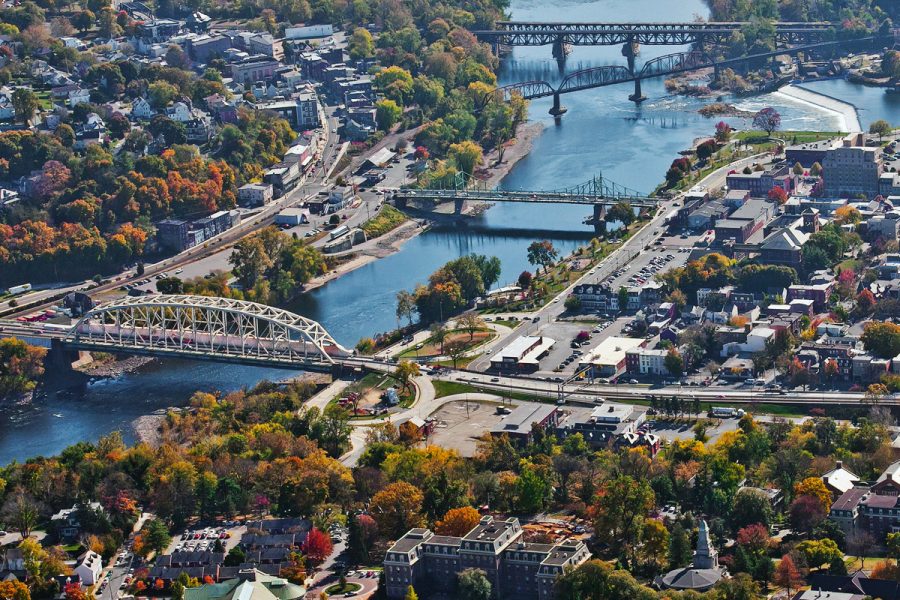Lafayette staff and students contribute to Easton’s recently approved climate action plan
Considering its location next to the Delaware River, Lafayette professors believe that climate change may create greater possibilities of flooding in Easton. (Photo courtesy of City of Easton website)
December 3, 2021
Climate change is wreaking havoc across the world, and this is only the beginning. Easton, Pa has laid out a plan to fight back.
On Nov. 24, 2021, the city of Easton passed a new Climate Action Plan by resolution in the City Council. The plan states that the city intends to comply with the Climate Action Plan set by the state of Pennsylvania, which would reduce greenhouse gas emissions 30% by 2030 and 80% by 2050.
The Chair of Engineering Studies and Associate Professor Benjamin Cohen explained that members of the Lafayette community were involved with the project. Cohen referenced the Nature Nurture Center, a center in Easton dedicated to learning about environmental risks, which was assigned to help create a vulnerability assessment for the city of Easton. He explained how in 2018 he worked with Associate Professor of Engineering Studies Julia Nicodemus as well as some students to produce the vulnerability assessment.
He stated that they focused on two parts at the time: the effects of increasing heat and having a “hotter city,” and the risk of increased flooding and water damage. For the latter aspect, Cohen explained how the issue people traditionally think of climate change as concerning rising sea levels which only affect coastal cities.
“That pressure also affects river cities like ours too, and increases flow of water down the river,” Cohen said.
After studying the scenarios of what could happen to Easton in 50 to 75 years from now, Cohen, Nicodemus and the group of students came up with solutions for the city of Easton to follow to mitigate future natural shifts as the result of climate change.
“You kind of have what are traditional avenues like impervious surfaces, like less pavement, more surfaces that can absorb water instead of just runoff,” Cohen said. “Also more attention to cities upstream because a lot of the flooding that we have is caused by decisions by people upstream to close or open dams to have more water flow or less water flow. So it’s not really our decision, but we have to understand ourselves in that relationship.”
This is not the first time that Easton has taken action on climate change. Cohen explained that in 2016 the city signed on to the Global Covenant of Mayors, an organization of mayors around the world dedicated to understanding and creating a long-term vision for fighting climate change.
Professor of Environmental Science and Executive Director of the Nurture Nature Center Rachel Hogan Carr, as well as Kate Semmens, science director of the Nurture Nature Center, highlighted the Global Covenant of Mayors and stated their optimism for the hard work required to get the project.
“It’s one of those projects where it’s a lot of dedication. It’s not one of those easy projects where you’re hoping to get something immediately out of it. It’s more of a journey where you have this ultimate objective, this goal, and there’s challenges everywhere,” Semmens said. “It’s also rewarding and fun.”
Carr noted that the whole plan began when the people of Easton volunteered their time to make “very thoughtful suggestions about the priorities that they thought would help to mitigate climate impact.”
Both Semmens and Carr echoed each other and said that the most important part of the proposal was the yearly energy reviews for Easton, which would allow for changes to be requested such as energy benchmarking, improving energy in buildings and other possible solutions. The two also cited that the plan was going to “bring in more money, improve public health,” and “bring in more jobs to help the economy.”

























































































































